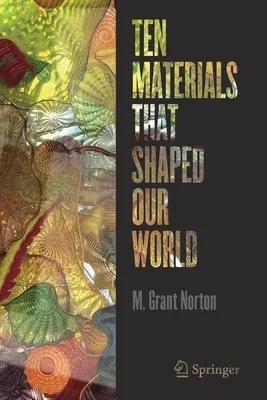This book examines ten materials--flint, clay, iron, gold, glass,
cement, rubber, polyethylene, aluminum, and silicon--explaining how they
formed, how we discovered them, why they have the properties they do,
and how they have transformed our lives. Since the dawn of the Stone
Age, we have shaped materials to meet our needs and, in turn, those
materials have shaped us.
The fracturing of flint created sharp, curved surfaces that gave our
ancestors an evolutionary edge. Molding clay and then baking it in the
sun produced a means of recording the written word and exemplified human
artistic imagination. As our ability to control heat improved,
earthenware became stoneware and eventually porcelain, the most prized
ceramic of all. Iron cast at high temperatures formed the components
needed for steam engines, locomotives, and power looms--the tools of the
Industrial Revolution. Gold has captivated humans for thousands of years
and has recently found important uses in biology, medicine, and
nanotechnology. Glass shaped into early and imperfect lenses not only
revealed the microscopic world of cells and crystals, but also allowed
us to discover stars and planets beyond those visible with the naked
eye. Silicon revolutionized the computer, propelling us into the
Information Age and with it our interconnected social networks, the
Internet of Things, and artificial intelligence.
Written by a materials scientist, this book explores not just why, but
also how certain materials came to be so fundamental to human society.
This enlightening study captivates anyone interested in learning more
about the history of humankind, our ingenuity, and the materials that
have shaped our world.

